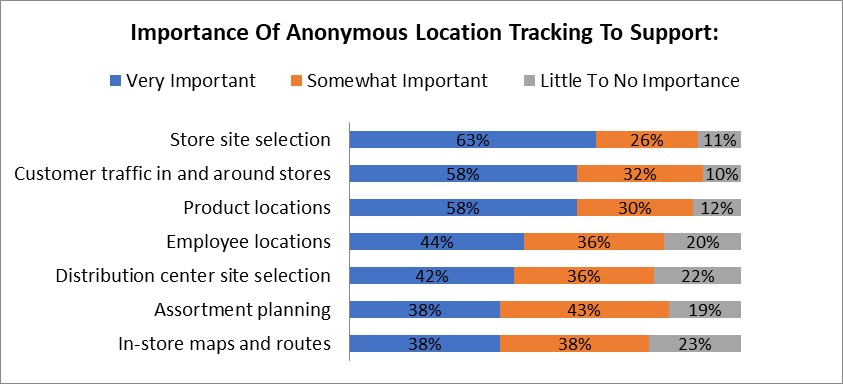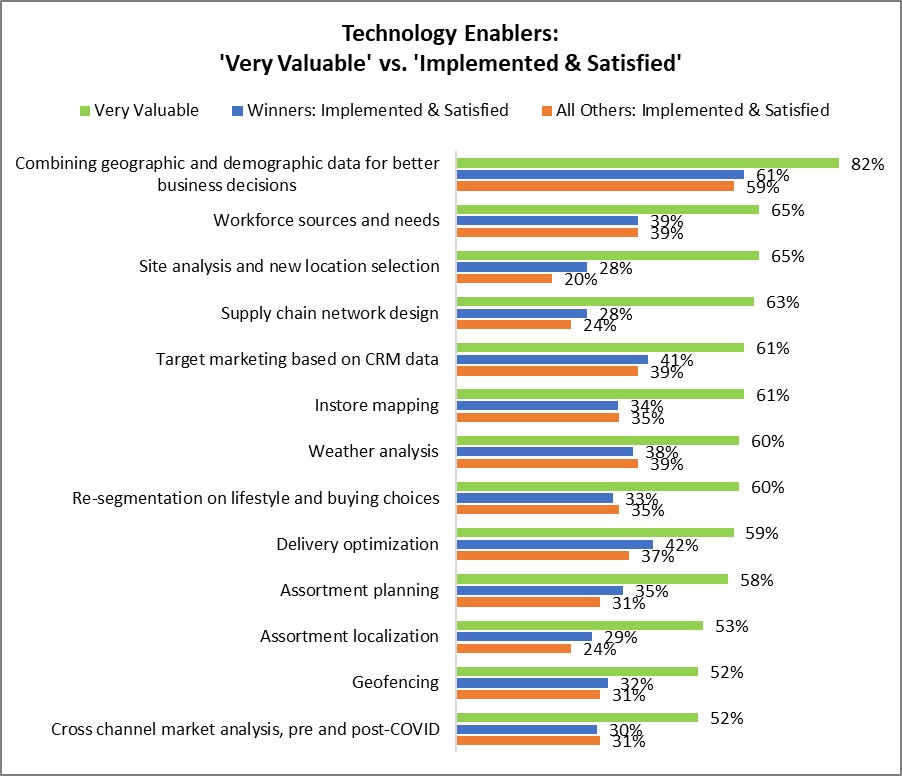RSR’s Upcoming Webinar: Practical Uses For Location Data & Analytics
On Thursday September 15, RSR will have another of its occasional “What Now?” webinars, this time to hear from industry colleagues about practical uses in retail for Location data and analytics. I’ll be joined in the conversation by Gary Sankary of ESRI, Dan Mitchell of SAS, and Gaylene Meyer of Impinj.
Why location data & analytics? RSR has been benchmarking retailers’ attitudes about the value of location data since 2017, and in those 5 years we’ve seen a (for retail) speedy maturation of the value and actual use of location data in decision making and operational processes. For example, in our inaugural study in December 2017, we noted that:
“…retailers seek to use anonymous customer location-based data to make better decisions with geographical data enriched with traffic flow, demographics, income and purchasing power information (Figure 1).
Figure 1: Moving from ‘Static’ to ‘Dynamic’ Location Intelligence

Source: RSR Research, December 2017
“Some retailers are also excited about using new location-based data to create a more compelling shopping experience for consumers while they are in the store, by linking customer geo-location data and product placement information to offer wayfinding maps and routes to consumers based on their current location in the store. However, while those objectives are laudable and definitely doable, this benchmark also reveals that retailers don’t really understand either the rewards or the risks associated with anonymous vs. non-anonymous customer geo-location data.”
In other words, retailers clearly saw the value of dynamic location data to inform traditional concerns (like where to open a store), but also had pretty starry eyed views about using location data inside stores to interact with consumers while they were walking the aisles. That kind of optimism was bound to result in retailers falling into what the Gartner hype cycle calls “the trough of disillusionment”.
The good news is that if a solution survives the trough of disillusionment (and location data & analytics in retail certainly has done that!), we enter a phase of adoption where practical use cases start to emerge and get implemented.
We at RSR have seen lots of evidence of that. By the time of our July 2021 benchmark, a whole series of use cases had emerged as important, and retailers demonstrated that great strides had already been taken to implement them:
“… because of the economic singularity that the pandemic triggered in 2020 – and the new importance that the pandemic placed on developing geo-location intelligence – Winners don’t have the advantage of early and successful adoption here. In fact, retailers across performance groups are in close sync when it comes to successful adoption of geo-location analytics.
It is also clear that retailers have a lot of work to do to take full advantage of what geo-location data and analytic has to offer. The gap between the value that retailers assign to the various analyses and the number who are satisfied with their efforts to date is glaring (Figure 2).
Figure 2: A Long Road To Realizing Value

Source: RSR Research, July 2021
This is a pretty big list of desirables, but there are more. For example, what about using location data to better manage spoilage and shrink? Sustainability? Loss Prevention? Other ideas?
RSR’s Upcoming What Now? Discussion: September 15
Now that the retail industry has some mileage on the adoption journey towards greater location intelligence, the team at RSR think it’s timely to have a discussion with some of the people who are working the challenges and opportunities in the real world. So we’re excited to set up the conversation. The good news for you is that it’s free! All you have to do is put it on your calendar.
